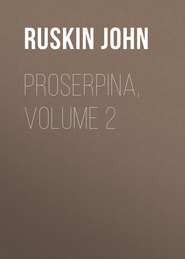По всем вопросам обращайтесь на: info@litportal.ru
(©) 2003-2024.
✖
Giotto and his works in Padua
Автор
Год написания книги
2018
Настройки чтения
Размер шрифта
Высота строк
Поля
2
For these historical details I am chiefly indebted to the very careful treatise of Selvatico, Sulla Cappellina degli Scrovegni nell'Arena di Padova. Padua, 1836.
3
Lord Lindsay, Christian Art, vol. ii. p. 166.
4
At Pietra Mala. The flames rise two or three feet above the stony ground out of which they spring, white and fierce enough to be visible in the intense rays even of the morning sun.
5
At least Lord Lindsay seems to consider the evidence collected by Förster on this subject conclusive. Christian Art, vol. ii. p. 168.
6
It might not, I think, be a work unworthy of the Arundel Society, to collect and engrave in outline the complete series of these Byzantine originals of the subjects of the Arena Chapel, in order to facilitate this comparison. The Greek MSS. in the British Museum would, I think, be amply sufficient; the Harleian MS. numbered 1810 alone furnishing a considerable number of subjects, and especially a Death of the Virgin, with the St. John thrown into the peculiar and violent gesture of grief afterwards adopted by Giotto in the Entombment of the Arena Chapel.
7
Notes to Rogers' Italy.
8
These words are gravely added to some singular particulars respecting the life of Adam, related in a MS. of the sixteenth century preserved in the Herald's College.
9
Lord Lindsay's evidence on this point (Christian Art, vol. ii. p. 174) seems quite conclusive. It is impossible to overrate the value of the work of Giotto in the Bargello, both for its own intrinsic beauty, and as being executed in this year, which is not only that in which the Divina Commedia opens, but, as I think, the culminating period in the history of the art of the middle ages.
10
Christian Art, vol. ii. p. 242.
11
Christian Art, p. 260.
12
I use this heraldic word in an inaccurate sense, knowing no other that will express what I mean,—the division of the picture into quaint segments of alternating colour, more marked than any of the figure outlines.
13
It has always appeared strange to me, that ecclesiastical history should possess no more authentic records of the life of the Virgin, before the period at which the narrative of St. Luke commences, than these apocryphal gospels, which are as wretched in style as untrustworthy in matter; and are evidently nothing more than a collection, in rude imitation of the style of the Evangelists, of such floating traditions as became current among the weak Christians of the earlier ages, when their inquiries respecting the history of Mary were met by the obscurity under which the Divine will had veiled her humble person and character. There must always be something painful, to those who are familiar with the Scriptures, in reading these feeble and foolish mockeries of the manner of the inspired writers; but it will be proper, nevertheless, to give the exact words in which the scenes represented by Giotto were recorded to him.
14
This passage in the old Italian of the MS. may interest some readers: "E complice queste parole lo zovene respoxe, dignando, Io son l'angelo de Dio, lo quale si te aparse l'altra fiada, in segno, e aparse a toa mulier Anna che sempre sta in oration plauzando di e note, e si lo consolada; unde io te comando che tu debie observare li comandimenti de Dio, ela soua volunta che io te dico veramente, che de la toa somenza insera una fiola, e questa offrila al templo de Dio, e lo Spirito santo reposera in ley, ela soa beatitudine sera sovera tute le altre verzene, ela soua santita sera si grande che natura humana non la pora comprendere."
15
(Note by a friend):—"To me the most striking part of it is, that the skeleton is entire ('a bone of him shall not be broken'), and that the head stands up still looking to the skies: is it too fanciful to see a meaning in this?"
16
The MS. makes the angel Raphael the only messenger. Giotto clearly adopts the figure of Gabriel from the Protevangelion.
17
In the next chapter, it is said that "Joseph drew back his rod when every one else presented his."
18
National, because Giotto's works are properly to be looked on as the fruit of their own age, and the food of that which followed.
19
As, for instance, on the two opposite angles of the façade of the Cathedral of Rheims.
20
(Note by a friend:) "I suppose you will not admit as an explanation, that he had not yet turned his mind to architectural composition, the Campanile being some thirty years later?"
21
See account of his principles above, p. 13 (#x1_x_1_i79), head C.
22
The exact date, 1290, is given in the title-page of the volume.











